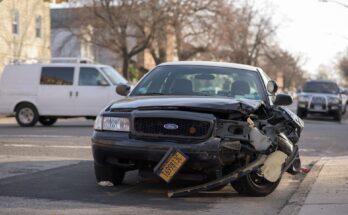Riding a motorcycle is an exhilarating experience. From cruising down country roads to weaving between cars and trucks on city streets, there are many benefits to riding a motorcycle. But when you’re on the road as an operator of a small, low-profile vehicle, you’re putting yourself at risk for accidents. If you’re thinking about getting your license and buying that first set of wheels, we have some great news: motorcycles qualify as “passenger” vehicles! That means that as long as you have another licensed driver with you (yes, this also means no learner’s permits), you can hit the road on that sweet hog! But before hitting the dealership and test drive lot, let’s talk about insuring that new bike of yours. After all, it is one of the most expensive things you own. In this blog post, we go over everything from insurance terminology to how much coverage you need on your bike before going into more detail about what types of policies are available for motorcyclists like you.
What is motorcycle insurance?
On a very basic level, motorcycle insurance is a contractual agreement between you and the insurance company. You are the policyholder and the insurance company is the “grantor” of the policy. The sole purpose of motorcycle insurance is to cover the costs of any damages or injuries sustained as a result of a motorcycle accident. In addition to covering damages, motorcycle insurance also serves as a safeguard against being sued for medical bills or damages caused to others in an accident. This is because motorcycle insurance companies will not protect you from everything that could go wrong in an accident. Instead, the company will pay for damages and injuries up to a certain amount per accident. The insurance company will often employ a subrogation team that will work with your lawyer to decide if you are held responsible for paying for damages or injuries sustained in an accident. If you are found to be at fault, then the subrogation team may attempt to collect the money paid out by the insurance company. This is why it is important to have coverage above the state’s required minimum.
Why do you need motorcycle insurance?
As we’ve discussed above, motorcycle insurance is a contract between you and the insurance company. However, both parties gain a lot from this relationship. When you buy motorcycle insurance, you are not just paying for coverage that you may use one day if you get into a bad accident. You are also obtaining peace of mind. You don’t have to worry about the cost of damages or the medical care of another rider. In the event of an accident, the other driver’s insurance will only cover damages to his or her vehicle. Your motorcycle, however, is likely to be damaged in the crash. Even if your bike isn’t totaled, you will have to pay out of pocket to get it fixed.
Types of motorcycle insurance
There are three main types of insurance policies you can purchase as a motorcycle rider: liability, collision, and comprehensive. Liability insurance covers the cost of damages when you hit someone else with your motorcycle. The minimum coverage is $25,000 per person and $50,000 for all persons in an accident. This amount should be increased if you want to be protected from an expensive lawsuit. If you happen to get into an accident with someone else, you may damage their motorcycle, their car, or both. With collision coverage, you can repair your bike, but you will have to pay the deductible out of pocket. Collision coverage is optional; you do not need to purchase it. Completion coverage is for damages to your motorcycle caused by weather or other natural factors, like hail.
Standard Insurance vs. Extended Protection
Before you choose a specific insurance policy, you should first decide how much coverage you need. The larger the coverage amount, the more it will cost you. Still, it’s important to have enough coverage to account for injury to yourself and others in an accident. There is a difference between “standard” and “extended” coverage. All states have a minimum requirement for liability coverage. For example, in New York, the minimum required amount of coverage is $25,000 per person and $50,000 for all persons in an accident. Normal coverage will meet the state’s minimum, but it won’t go above and beyond to protect you in the event of an accident. Extended coverage will go above and beyond the state’s minimum requirements.
Other types of coverage you may want to consider
Medical coverage – This can cover the cost of medical care for both you and any passengers if you are involved in a motorcycle accident. It can also cover medical care for the other person involved in the accident if they are uninsured or underinsured. Uninsured/underinsured coverage – This coverage protects you in the event that another person who is at fault in an accident doesn’t have any insurance or enough to cover the cost of their damages. Personal injury protection (PIP) – PIP protects you and your passengers in the event of an accident. It can cover medical costs, lost wages, and other costs associated with an accident. Collision coverage – This coverage can help you repair your motorcycle if it is damaged in an accident.
Conclusion
When you purchase motorcycle insurance, you are purchasing protection for yourself in the event of an accident. Having insurance is mandatory in many states, but it is advised to have even more coverage than the state requires. This can protect you in the event of an accident and help you deal with the financial burden of medical bills. Having motorcycle insurance can be a tricky process, but it is important to cover yourself financially in the event of an accident. When you purchase a motorcycle policy, it is important to understand the different types of coverage so you can make sure you are adequately protected.



